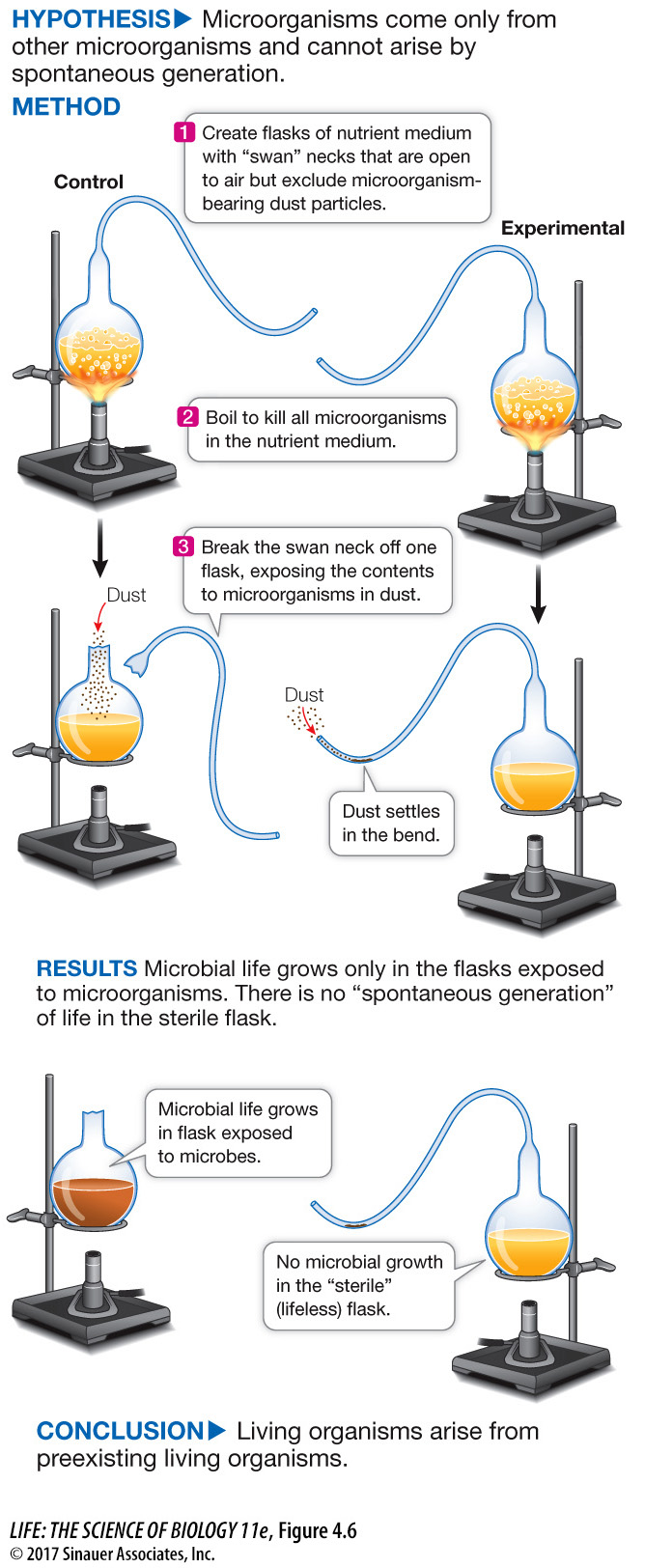Living organisms do not repeatedly come from inanimate nature
We can’t know for certain how life on Earth began. But one thing is sure: life (or at least life as we know it) is not constantly being restarted. That is, spontaneous generation of life from inanimate nature is not happening repeatedly before our eyes. Now and in the past, all life has come from life that existed before. But people, including scientists, did not always believe this.
Many cultures and religions have suggested that life can arise repeatedly from nonliving matter. During the European Renaissance (from the fourteenth to seventeenth centuries, a period that witnessed the birth of modern science), most people thought that at least some forms of life arose repeatedly and directly from inanimate or decaying matter by spontaneous generation. People thought, for example, that mice arose from sweaty clothes placed in dim light; that frogs sprang directly from moist soil; and that rotting meat produced flies. One scientist who doubted these assumptions was the Italian physician and poet Francesco Redi. Redi hypothesized that flies arose not by some mysterious transformation of decaying meat, but from other flies that laid their eggs on the meat. In 1668, Redi performed a scientific experiment—
One jar contained meat exposed to both air and flies.
A second jar was covered with a fine cloth so that the meat was exposed to air but not to flies.
The third jar was sealed with a lid so the meat was exposed to neither air nor flies.

As he had hypothesized, Redi found maggots, which then hatched into flies, only in the first jar. This finding demonstrated that maggots could occur only where flies were present before. The idea that a complex organism like a fly could appear spontaneously from a nonliving substance in the meat, or from “something in the air,” was laid to rest. Well, perhaps not quite to rest.
71
In the 1660s, the newly invented microscope revealed a vast biological world that had never been seen before. Virtually every environment on Earth was found to be teeming with tiny organisms. Some scientists believed these organisms arose spontaneously from their rich chemical environment, by the action of a “life force.” But experiments in the nineteenth century by the great French scientist Louis Pasteur showed that microorganisms can arise only from other microorganisms, and that an environment without life remains lifeless (Figure 4.6).
experiment

Figure 4.6 Disproving the Spontaneous Generation of Life
Source: Pasteur gave a talk on his research at the “Sorbonne Scientific Soirée” on April 7, 1864. This talk has been translated into English: rc.usf.edu/~levineat/pasteur.pdf.
Previous experiments disproving the spontaneous generation of larger organisms were called into question when microorganisms were discovered. Louis Pasteur’s classic experiments disproved the spontaneous generation of microorganisms.
Animation 4.2 Pasteur’s Experiment
www.life11e.com/
Pasteur’s and Redi’s experiments showed that living organisms cannot arise from nonliving materials under the conditions that exist on Earth now. But their experiments did not prove that spontaneous generation never occurred. Eons ago, conditions on Earth and in the atmosphere above it were vastly different than they are today. Indeed, conditions similar to those found on primitive Earth may have existed, or may exist now, on other bodies in our solar system and elsewhere.